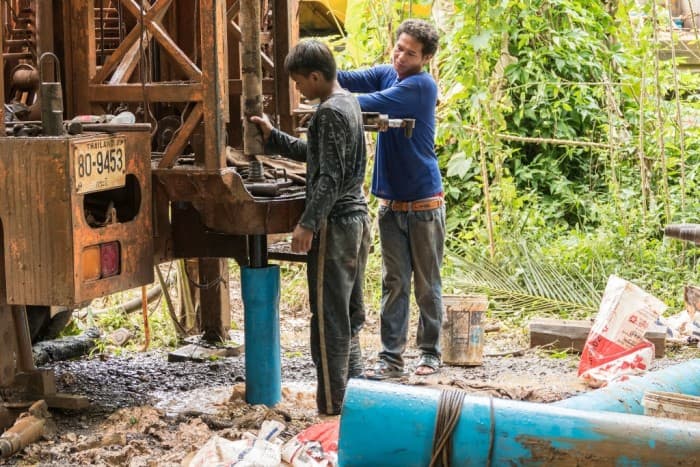
The average household uses 201 kiloliters of water a year at an approximate cost of $1,100 per annum including sewage charges. Of course, this varies depending on the state you live in but it’s hard to deny this is a significant cost.
It’s possible to reduce your consumption and reduce the charge on your bill. However, a large proportion of the charge is actually for the sewage service, making it harder to significantly reduce your bill.
However, you can dramatically drop your bill by drilling your own well. In fact, in some parts of the country, this is the only option as connecting to the mains water is simply too expensive.
The good news is that drilling your own well is not difficult. You simply need to verify a few facts before you speak to a contractor or rent your own machines and purchase the very best rock augers.
The Water Table
In order to successfully drill a well the water table should be between 30ft and 50ft.
The water table simply refers to where the water sits below the surface of your soil. In short, it’s where the water pressure is equal to atmospheric pressure, preventing the water from rising any higher.
If you were to dig into your soil it’s the level at which you’d find water, this is different in summer and winter. You’ll need the water table to be below soil level or you’ll risk the well collapsing in on itself.
Thirty feet is usually considered the minimum depth of a well to reach high-quality water that can actually be drunk. However, you may need to go deeper depending on where the water actually is below you.
Soil Type
A well can actually be drilled or driven almost anywhere but you’ll need to know what type of soil you’re dealing with in order to have the right equipment for the job.
In general, you can drill through rock and to great depths while shallow wells can be created by driving through the ground. It’s important to know which process is right for you before you start.
Check With Your Building Department
You’ll need to verify whether a permit is required or not. In most cases, this is a yes as your drilling has the potential to interfere with the water cycle and public water.
You’ll need to follow all the local guidelines in order to get the permit.
Check Services
It’s always a good idea to verify whether any electrics or other utilities are running under your property. You can speak to the utility companies to ensure that there is nothing. If supplies are running under your property you’ll need to plan your well drilling around them.
Get A Pump
Once you’ve reached the required depth you’ll need to utilize a pump to bring the water to the surface. This can be a submerged pump but it is usually better for maintenance to use a larger pump above ground in a dedicated building.
Turning the pump on should give you the water you want, but test it for safety reasons before you start drinking!
